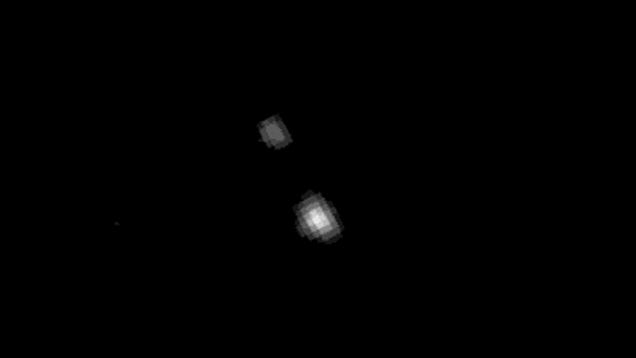New Horizons invia le prime immagini di Plutone e Caronte

NASA's New Horizons has returned its first images of Pluto and its largest moon, Charon, since the mission entered into the countdown phase of its historic mission. Taken at a distance of 126 million miles (200 million km), it will pale in comparison to the images expected over the coming months.
Our First Grainy Glimpse Of Pluto And Charon As New Horizons Closes In
The images were snapped by New Horizons' telescopic Long-Range Reconnaissance Imager (LORRI) late last month. The spacecraft will make its closest approach on July 14th.
"Pluto is finally becoming more than just a pinpoint of light," noted New Horizons team member Hal Weaver in a statement. "LORRI has now resolved Pluto, and the dwarf planet will continue to grow larger and larger in the images as New Horizons spacecraft hurtles toward its targets."
Encouragingly, the new LORRI images show that the camera's performance has not changed since it was launched more than nine years ago.
Not much can be gleaned from these photos, but they will be used by mission navigators to design course-correcting engine maneuvers that will aim New Horizons more precisely for its flyby. The first correction is expected to take place on March 10th.

Our First Grainy Glimpse Of Pluto And Charon As New Horizons Closes In
Prior to the countdown phase of the mission, New Horizons captured a photo of Pluto and Charon. Since July 2014, the spacecraft has more than halved its distance to Pluto, from about 264 million miles (425 million kilometers) to 126 million miles (203 million kilometers). New Horizons is currently moving at a rate of 31,000 mph (50,000 km/h). The system is now four times brighter and twice as large as it was in July.
http://io9.com/our-first-grainy-glimpse-of...dium=socialflowImage credit: NASA/Johns Hopkins University Applied Physics Laboratory/Southwest Research Institute.


